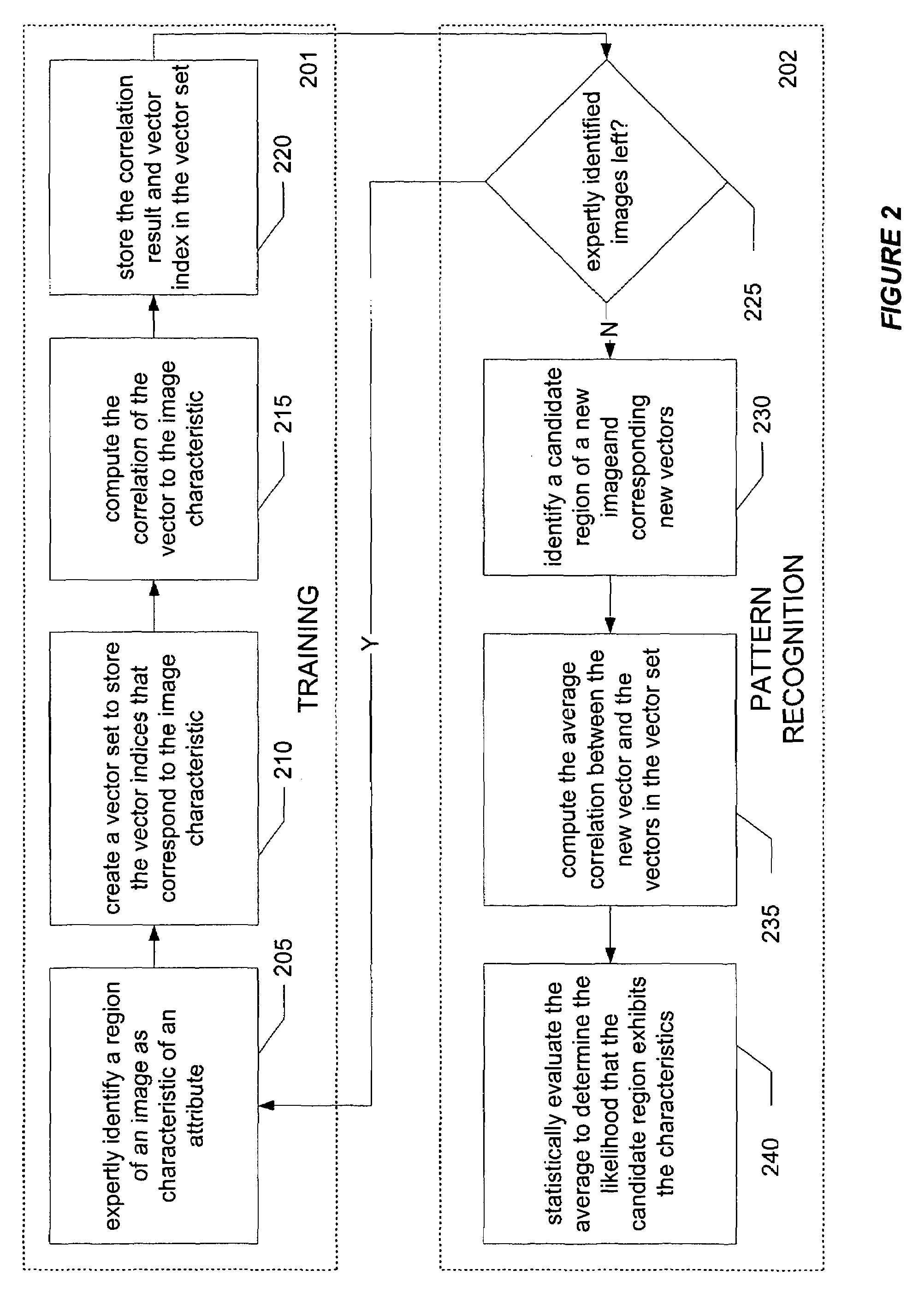Systems and methods for image pattern recognition
- Summary
- Abstract
- Description
- Claims
- Application Information
AI Technical Summary
Benefits of technology
Problems solved by technology
Method used
Image
Examples
Embodiment Construction
[0021]Certain embodiments as disclosed herein provide for pattern recognition systems and methods. For example, one method as disclosed herein allows for a digitized image to be segmented into a plurality of image kernels. The image kernels are then analyzed to determine the intensity of each pixel in the kernel. The pixel intensities for an image kernel are then combined into a vector and the vector is stored in a data structure with other vectors for the image. Each vector is indexed to create a composite index for the digitized image that can later be reconstructed using the indices and the vectors.
[0022]After reading this description it will become apparent to one skilled in the art how to implement the invention in various alternative embodiments and alternative applications. However, although various embodiments of the present invention will be described herein, it is understood that these embodiments are presented by way of example only, and not limitation. As such, this deta...
PUM
 Login to View More
Login to View More Abstract
Description
Claims
Application Information
 Login to View More
Login to View More - R&D
- Intellectual Property
- Life Sciences
- Materials
- Tech Scout
- Unparalleled Data Quality
- Higher Quality Content
- 60% Fewer Hallucinations
Browse by: Latest US Patents, China's latest patents, Technical Efficacy Thesaurus, Application Domain, Technology Topic, Popular Technical Reports.
© 2025 PatSnap. All rights reserved.Legal|Privacy policy|Modern Slavery Act Transparency Statement|Sitemap|About US| Contact US: help@patsnap.com



